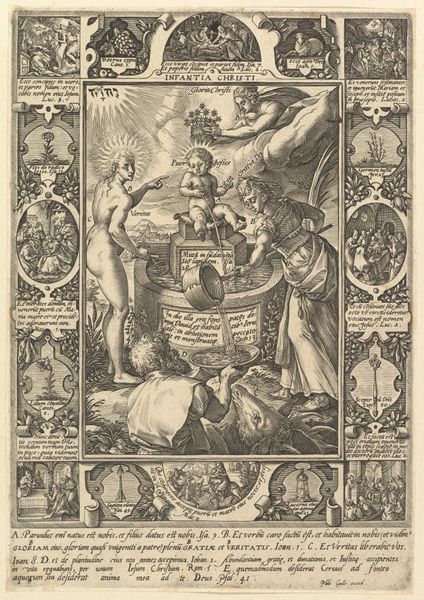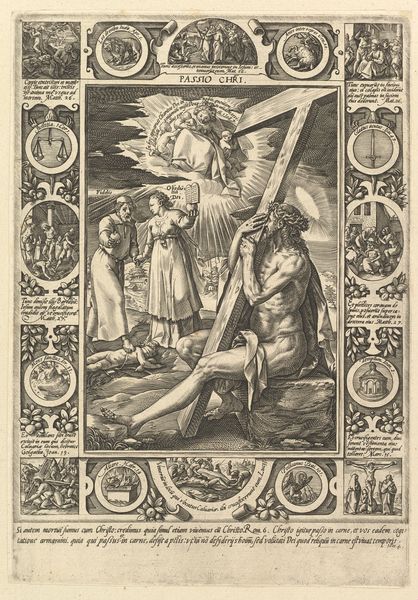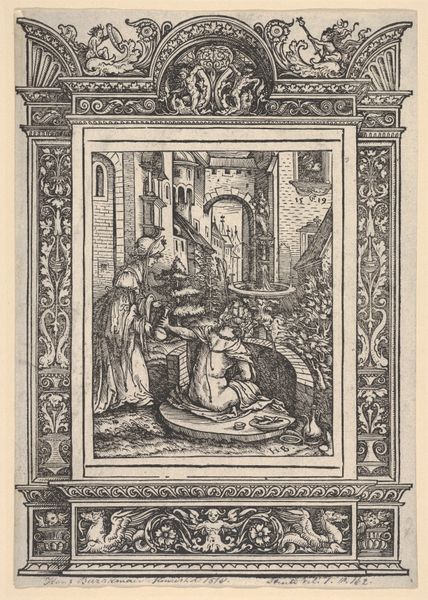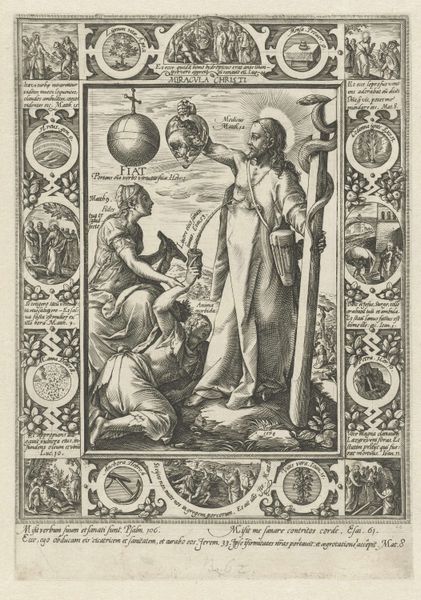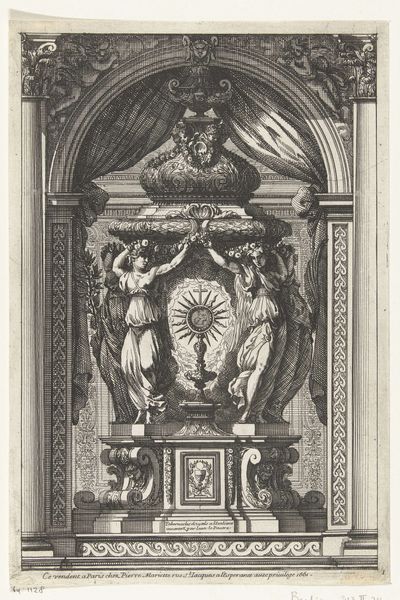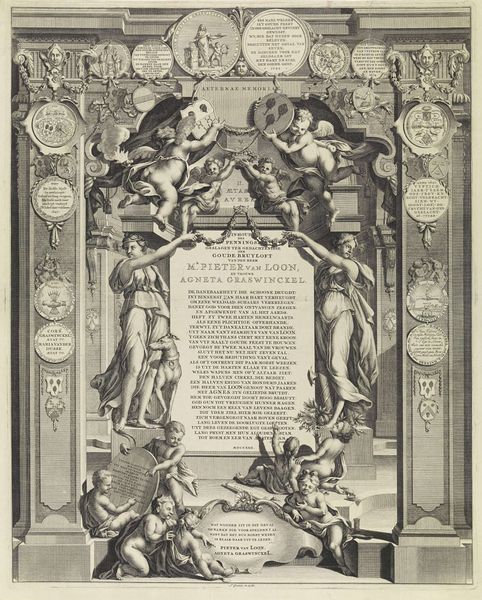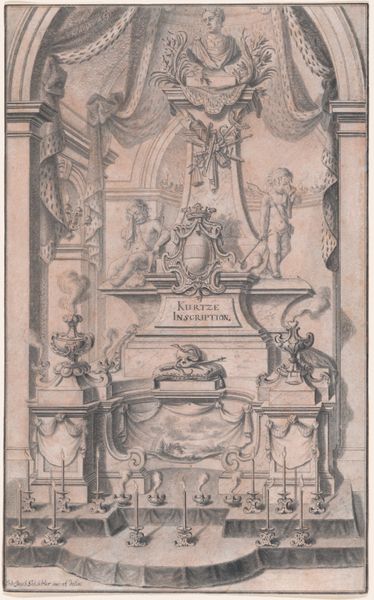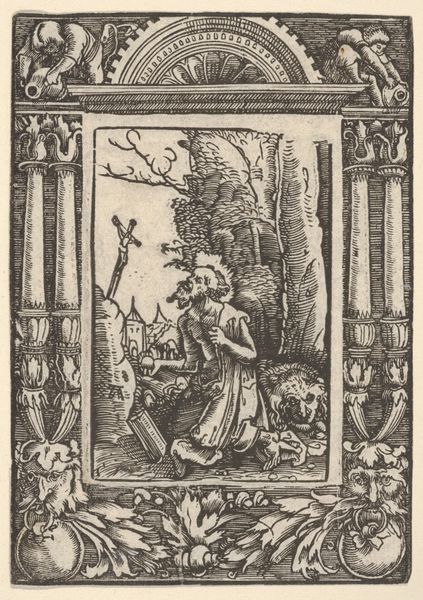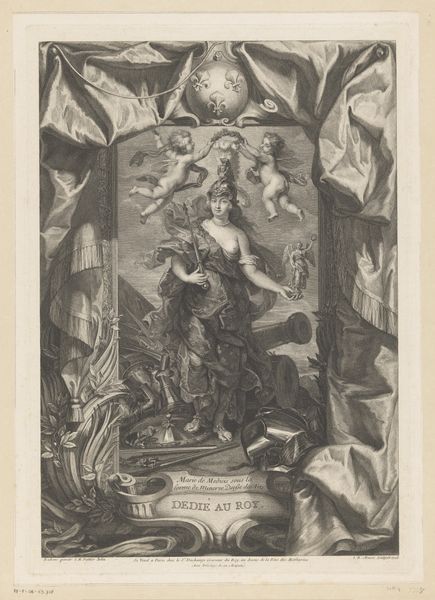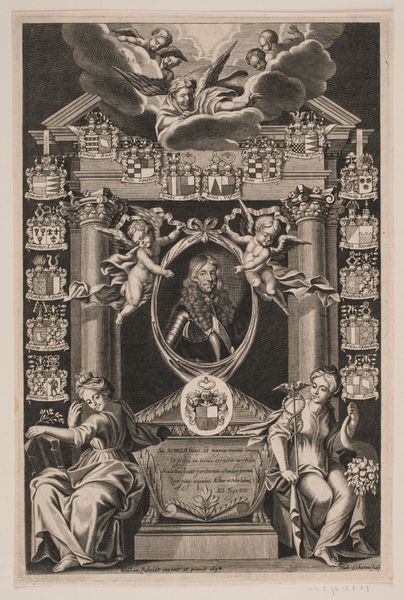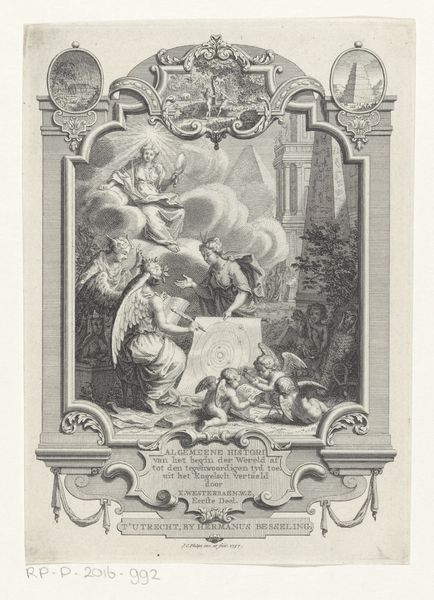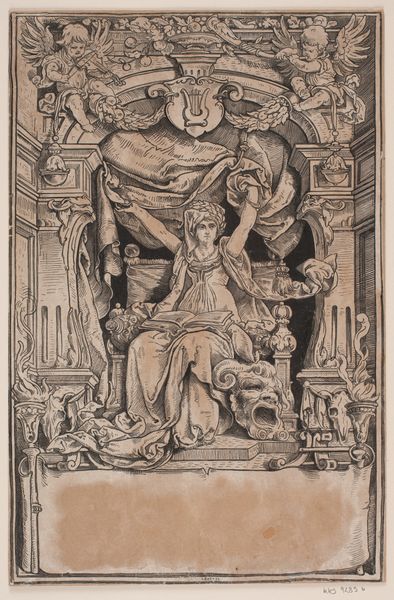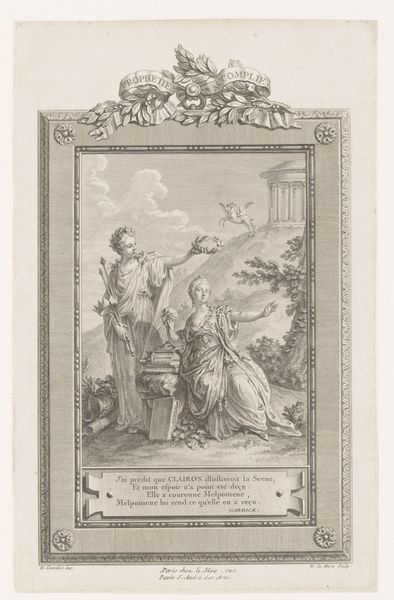
Ave Maria, from Allegorical Scenes on the Life of Christ, from Christian and Profane Allegories 1560 - 1617
0:00
0:00
drawing, print, engraving
#
portrait
#
drawing
#
allegory
# print
#
mannerism
#
figuration
#
history-painting
#
engraving
#
virgin-mary
#
angel
Dimensions: sheet: 9 7/16 x 7 1/2 in. (24 x 19 cm)
Copyright: Public Domain
Hendrick Goltzius made this print, Ave Maria, sometime before his death in 1617. The process, engraving, is deceptively simple: lines are incised into a metal plate, which is then inked and printed. But achieving this level of detail requires tremendous skill. Look closely, and you'll see how Goltzius uses line weight and density to create a sense of volume and light. Notice how the lines are closer together in the darker areas, and further apart in the lighter areas. It’s almost photorealistic, even though it's just made of tiny marks. Engraving like this was a crucial technology in the early modern period, allowing for the mass production and dissemination of images. It put visual culture into wide circulation like never before. This wasn’t just about aesthetics; it was about power, influence, and the shaping of public opinion, achieved through skilled labor and the mechanics of reproduction. Considering the material and processes behind Ave Maria helps us appreciate the work not just as a religious image, but as a product of its time, deeply embedded in the social and economic currents of early modern Europe.
Comments
No comments
Be the first to comment and join the conversation on the ultimate creative platform.

